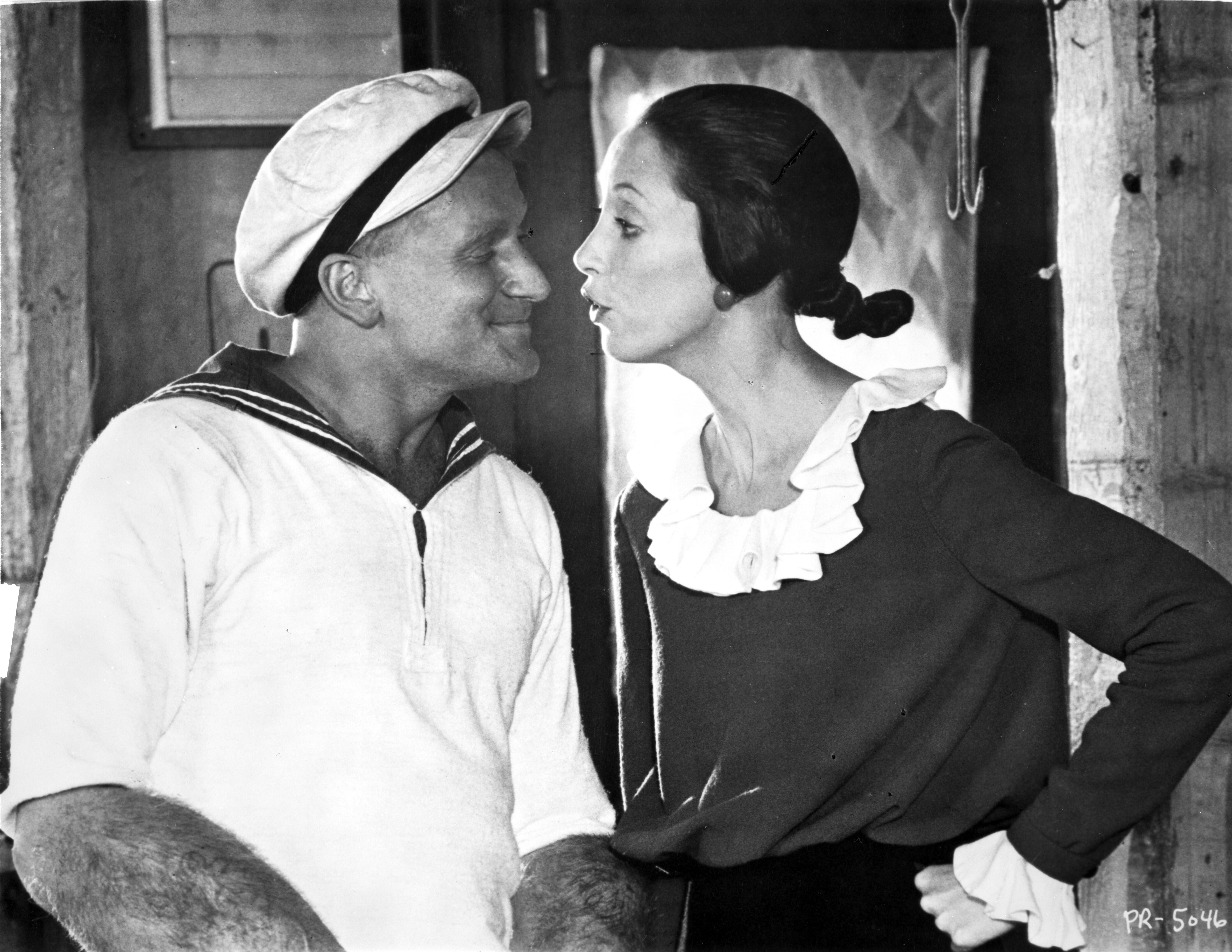Shelley Duvall: Shining star whose wide eyes expressed vulnerable depths
The Texan star of ‘The Shining’, ‘Popeye’ and ‘Faerie Tale Theatre’, who has died aged 75, led a troubled life after leaving Hollywood but left an indelible mark on Seventies cinema before reinventing children’s television, writes Kevin E G Perry


Your support helps us to tell the story
From reproductive rights to climate change to Big Tech, The Independent is on the ground when the story is developing. Whether it's investigating the financials of Elon Musk's pro-Trump PAC or producing our latest documentary, 'The A Word', which shines a light on the American women fighting for reproductive rights, we know how important it is to parse out the facts from the messaging.
At such a critical moment in US history, we need reporters on the ground. Your donation allows us to keep sending journalists to speak to both sides of the story.
The Independent is trusted by Americans across the entire political spectrum. And unlike many other quality news outlets, we choose not to lock Americans out of our reporting and analysis with paywalls. We believe quality journalism should be available to everyone, paid for by those who can afford it.
Your support makes all the difference.Shelley Duvall never intended to become a movie star, or an actor of any kind, but when she did she changed the medium forever. Her long association with Robert Altman made the Texas-born actor, who has died at 75, one of the most recognisable stars of 1970s cinema. In the decade that followed, she changed the face of children’s television as the producer and star of a string of shows that reimagined fairytales for a modern audience. Although her career was long and idiosyncratic, she will probably be best remembered for her indelible performance in the 1980 horror classic The Shining, immortalised with her big eyes as wide as the moon and her face contorted into a scream Edvard Munch could have painted as her husband breaks through a bathroom door with an axe.
She once described her arrival into the business of filmmaking as “kind of a fairytale in itself”. Born in Fort Worth, Texas, to Robert, a cattle auctioneer turned lawyer, and Bonnie, a real estate agent, she grew up with three younger brothers – Scott, Shane and Stewart. While at school in Houston, she aspired to become a scientist, although she abandoned those dreams and dropped out of South Texas Junior College after witnessing a monkey vivisection. She moved in with her boyfriend, an artist named Bernard Sampson, and at the age of 20 threw a fateful party at their home.
“Three men walked in that I didn’t know. Neither of us knew them,” she told CNN in 1985. “One of them said: ‘We have some patrons of the arts for friends. Could you bring your boyfriend’s paintings up Wednesday at one o’clock?’” Duvall dutifully delivered 35 paintings, not realising she had in fact been scouted as a potential film star. “I brought 35 paintings up there, and sure enough there were some patronly-looking gentlemen sitting around. One of them said: ‘How would you like to be in a movie?’ That man was Robert Altman.” The director, fresh from the success of M*A*S*H, was in Texas shooting the dark comedy Brewster McCloud and wanted someone exactly like Duvall to play the love interest. Years later, Duvall asked Altman what he had seen in her. “I said: ‘What was it anyway? Why me?’” she recalled. “He said: ‘I thought you were just so natural. I couldn’t beat you, so I hired you!’”
That was the start of a long and productive relationship between the pair. In total, Duvall starred in seven Altman films, following Brewster McCloud with McCabe & Mrs Miller, Thieves Like Us, Nashville, Buffalo Bill and 3 Women. Her performance in the latter psychological drama earned her the Best Actress award at Cannes in 1977 and brought her to the attention of The Shining director Stanley Kubrick, who said he liked the way she cried. She collaborated again with Altman on 1980’s Popeye, starring as Olive Oyl opposite Robin Williams’s titular sailor man.

It is Duvall’s performance as Wendy Torrance in The Shining that secured her place in cinematic history, as well as making her a household name. In 1981, she recalled stopping at a Dairy Queen in a tiny town at 11.30 at night, and being interrupted before she could even order with the question: Aren’t you Shelley Duvall? “I went, oh God, I’m a star,” she remembered. After she left Hollywood, a popular myth grew that Kubrick had mistreated her on set and that this had eventually led to a prolonged mental breakdown. In truth, she always maintained in interviews that the filming process, while long and exhaustive, was a collaborative one. She often recalled playing chess with the director between takes. “[Kubrick] was very warm and friendly to me,” she told The Hollywood Reporter in 2021. “He spent a lot of time with Jack [Nicholson] and me. He just wanted to sit down and talk for hours while the crew waited. And the crew would say, ‘Stanley, we have about 60 people waiting.’ But it was very important work.”
Rather than continue to pursue horror roles, Duvall used her newfound fame to change tack entirely. In 1982, through her own production company Platypus, she created and oversaw the much-loved children’s show Faerie Tale Theatre. The anthology series brought together an all-star cast that included the likes of Williams, Jeff Bridges, Carrie Fisher and Mick Jagger, with directors such as Altman, Tim Burton and Francis Ford Coppola. Although she never had children of her own, Duvall’s work is credited with pioneering and reimagining children’s television. She created several more series in a similar vein, including Tall Tales & Legends, which ran from 1985 to 1987, and Shelley Duvall’s Bedtime Stories, from 1992 to 1993. She also starred in the 1990 Disney musical film Mother Goose Rock ’n’ Rhyme, during which she met musician Dan Gilroy, of Madonna’s former band Breakfast Club. The pair fell in love and were partners until her death.
Duvall’s withdrawal from Hollywood was the subject of much rumour and speculation. A New York Times profile earlier this year attributed it to a combination of factors, including the impact of the 1994 Northridge earthquake, which damaged her Los Angeles home, and the stress of one of her brothers falling ill, which prompted her to move back to Texas around the same time. She continued to act until 2002’s Manna from Heaven, although she returned last year for a final appearance in the independent horror film The Forest Hills. By that time her mobility had become severely restricted by a combination of diabetes, which ultimately led to her death, and an injury to her left foot. The production crew made allowances for these issues by travelling to Texas from upstate New York so that she could film scenes at home, and writing her wheelchair into the film. She told The New York Times: “I wanted to act again. And then this guy kept calling, and so I wound up doing it.”
That film provided a more fitting final appearance for the actor than her previous screen appearance, in a controversial 2016 Dr Phil episode titled: “A Hollywood Star’s Descent Into Mental Illness: Saving The Shining’s Shelley Duvall”. During the episode, which never aired in full, she appeared paranoid and sometimes incoherent, claiming she was being threatened by “the Sheriff of Nottingham” and that Williams, who had died two years earlier, was still alive as a shape-shifter. Mia Farrow was among the many to criticise the decision to air the interview, writing on social media: “There [should] be laws to protect mentally ill people from TV talk show predators like [Dr Phil] who is exploiting Shelley Duvall for his own gain.”
While these later years away from the limelight were undoubtedly difficult, Duvall leaves behind a broad and unique collection of performances and productions that would have seemed beyond unlikely when she was growing up in Texas. Modern-day actors such as Mia Goth and Anya Taylor-Joy have drawn comparisons with Duvall for both their looks and the off-kilter nature of their performances, but despite this influence, Duvall remains a one-of-a-kind. Her wide, expressive eyes and musical Texan drawl set her apart from the aspiring stars of her era, and on screen she seemed to move to a rhythm others couldn’t even hear, let alone keep time with.
Join our commenting forum
Join thought-provoking conversations, follow other Independent readers and see their replies
Comments